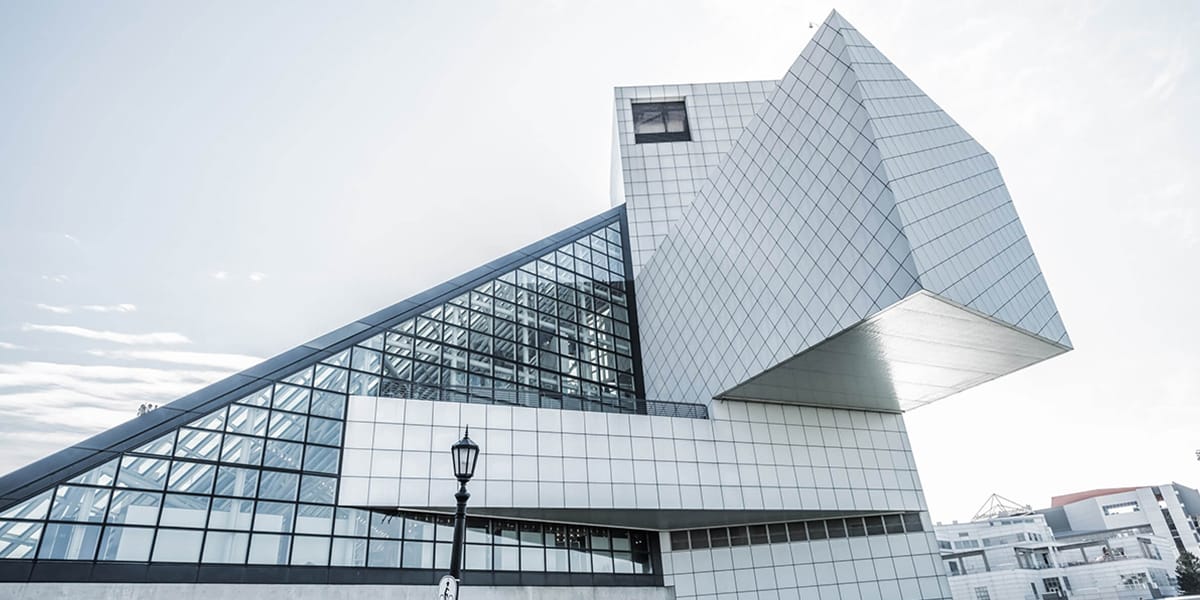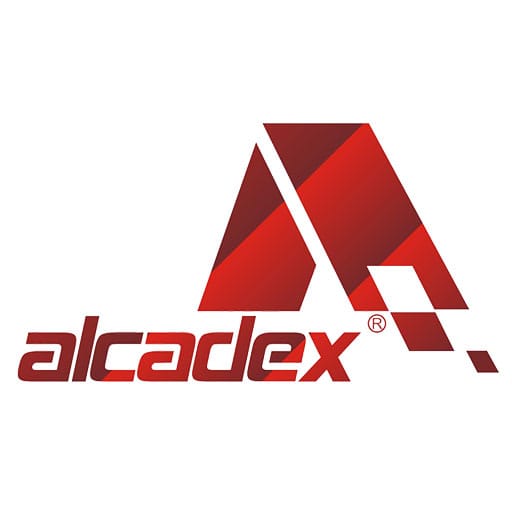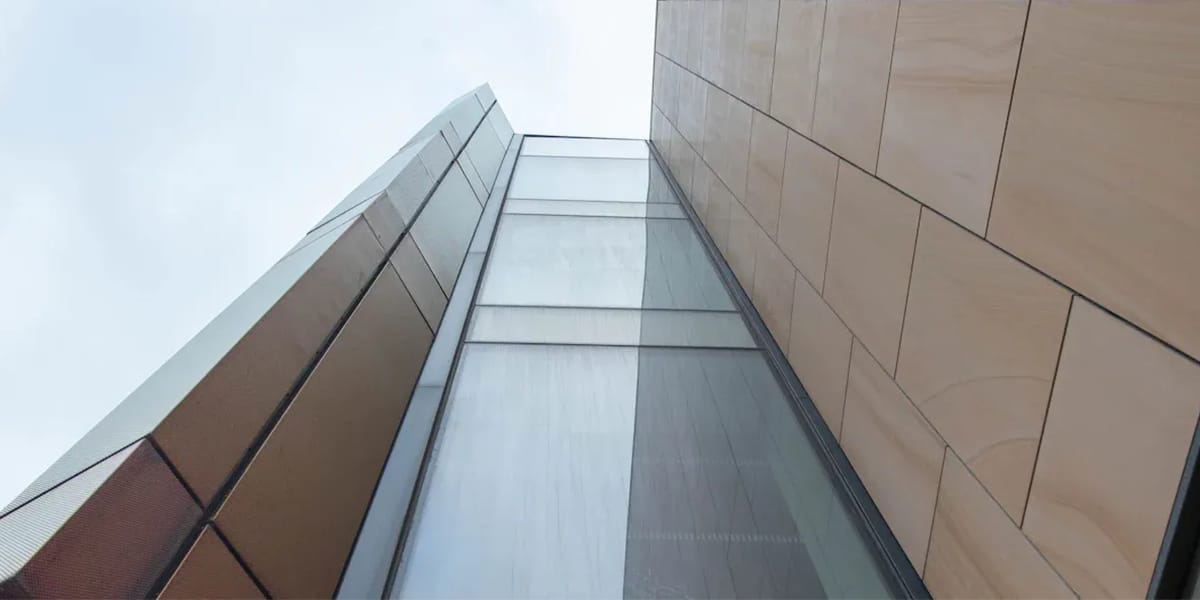
26 Aug Discover the Key Benefit of Using ACP Panels for Modern Buildings
Table of Contents
The main advantage of ACP panels is that they are strong, cost-effective, and versatile. Architects and builders prefer ACP panels because they are safe and durable. These panels are commonly used in schools, hospitals, and office buildings.
Aspect | Key Data |
|---|---|
Market Share (2023) | |
Building Costs | |
Visual Appeal | Wide range of colors and finishes |
ACP panels help maintain comfortable indoor temperatures and contribute to energy savings, making them environmentally friendly. Their quick installation and low maintenance requirements make them a main advantage over other building materials.
Key Takeaways
ACP panels are tough and stay good for years. They can handle bad weather, fire, and damage better than wood or stone.
They help save money because they are easy to put up. They are light and do not need much fixing or care.
ACP panels come in many colors and looks. Architects can use them to make cool and new building styles.
ACP panels help buildings stay warm or cool. This lowers energy bills and makes people feel better inside.
They keep water and mold away from buildings. This makes them great for places that are wet or humid.
Main Advantage of ACP Panels

Durability
Durability is the biggest benefit of ACP panels today. These panels can handle bad weather, rust, and fading. They keep looking good and stay strong for many years. Experts say ACP panels do well in tough places, like heavy rain or bright sun. They also stand up to pollution. Tests show ACP panels are safe in fires. They do not catch fire fast and do not give off much heat. Wood can rot or get eaten by bugs. Stone can crack as time passes. ACP panels are better at avoiding damage. They usually last 20 to 25 years with little care. Cleaning and checking them helps them last longer. Buying from trusted suppliers means you get good panels. ACP panels are a smart choice for buildings that need to be strong and look nice.
Cost-Effectiveness
Cost-effectiveness is another big reason people pick ACP panels. The first price may be higher than some other materials. But ACP panels save money later because they are easy to fix and do not need much care. The table below shows how much different cladding materials cost:
Cladding Material | Average Cost per Square Meter (USD) | Notes on Cost and Use Cases |
|---|---|---|
Aluminum Composite Panels (ACP) | $20 – $60 | Cost-effective, lightweight, widely used in commercial facades |
Solid Aluminum Sheets | $40 – $80 | More expensive, used in high-impact areas |
Wood Siding | $1 – $4* | Listed as expensive but cost seems inconsistent; varies by species and style |
Metal Claddings (general) | $2 – $7.5 | Aluminum sidings are the least expensive metal claddings |
In ten years, ACP panels need less work than wood, stone, or concrete. You do not have to paint or seal them. If one part breaks, you can just change that part. They are light, so it is cheaper and faster to put them up. Cleaning is easy and only needs water once or twice a year. All these things make ACP panels a good deal for people who want to save money over time.
Tip: ACP panels help you spend less on fixing and replacing, so they are great for big buildings.
Design Flexibility
Design flexibility is a top reason architects like ACP panels. You can get them in almost 40 colors and many finishes. Some finishes look like metal, wood, marble, glass, or mirrors. You can pick the size, shape, and finish you want. This lets you make special and cool designs. ACP panels can bend, twist, or fold into shapes other materials cannot do. New types, like 3D sheets and printed panels, give even more choices. Architects use ACP panels for curved walls and modern rooms. Big buildings, offices, and clinics often use ACP panels to look nice and last long. ACP panels can look like wood, copper, or steel, which makes them very useful.
ACP panels have finishes that block water, stains, and sun damage.
They are used for walls, room dividers, and decorations inside and outside.
You can mix ACP panels with glass or other materials for creative looks that help with branding.
Design flexibility, along with strength and saving money, makes ACP panels the best choice for new buildings that want to look good and work well.
Building Performance
 Energy Efficiency
Energy Efficiency
ACP panels help buildings use less energy in many ways. They have layers with a special core that slows down heat. This keeps rooms cool or warm and saves money on bills. Many architects pick ACP panels because they help keep heat in or out. The panels add a layer that stops heat from moving. Buildings with ACP panels often pay less for heating and cooling.
ACP panels keep heat in or out by using air gaps and special cores.
Honeycomb ACP panels have air pockets that work like natural insulators.
ACP panels can work with solar panels or thermal breaks for better energy use.
Using them in a rain-screen system lets air move and stops mold.
Material Type | Thermal Insulation Characteristics | Additional Notes |
|---|---|---|
Good at keeping heat in or out because of the air gap. This saves energy and money. | Helps control temperature and saves energy. | |
Aluminum Honeycomb Core ACP | Very good at stopping heat because of air pockets. They are light, strong, and safe in fires. | Good for strong and fire-safe buildings. |
Wood | Wood keeps heat in well and is good for the planet. | Needs care and fire safety treatment. |
Solid Aluminum | Not good at stopping heat. It does not keep heat in or out well. | Strong and does not rust but needs more insulation. |
Lightweight Structure
ACP panels are much lighter than brick or stone. A 4mm ACP panel weighs about 5.5 kg per square meter. This makes them easy and quick to put up. Workers can move ACP panels without much trouble, so it costs less to build. Lighter panels mean buildings do not need as much support.
Aluminum composite panels make buildings lighter by over 30% compared to stone or glass. This helps builders save money on the base and walls. ACP panels are strong but do not add much weight. They weigh about the same as wood but need less care.
Note: Light ACP panels help build faster and put less stress on buildings. They are great for new building styles.
Moisture Barrier
ACP panels are good at keeping water out, even in wet places. Builders use ACP panels in rainscreen systems. These systems do not block all water but control it with smart design. Things like pressure chambers, air spaces, and drains help move water and air.
ACP panels let water run off and dry fast, so there is less mold or dampness. Compared to old cladding, ACP panels in rainscreen systems handle water better. They mix water control, pressure balance, and air flow to keep buildings dry. This makes ACP panels a top pick for rainy or humid places.
Supporting Benefits
Easy Installation
ACP panels are easy to put up. They are light, so workers can move them without trouble. This saves money because you do not need big machines. The panels come ready to use, which makes building go faster. Projects finish on time because of this. Builders like ACP panels for jobs that need to be done quickly or with less money.
ACP panels have special coatings, so you do not need to paint them.
You can put up the panels in almost any weather.
There is no waiting for them to dry or cure.
Hanging, wet sealant, and dry gasket joints make work simple and let the panels move with heat.
ACP panels skip steps like painting and drying, so projects finish faster and need fewer workers.
Low Maintenance
People who own buildings like that ACP panels are easy to care for. You just clean them with gentle soap and water. You do not need rough cleaners that might scratch them. Checking and sealing the joints sometimes keeps water out.
Cladding Type | Maintenance Needs | How Long They Last |
|---|---|---|
ACP Panels | Clean with gentle soap; check and seal joints | |
PU Wall Panels | Clean with soap and water; fix small damage easily | Lasts long, resists stains |
ACM (Metal) | Needs regular care; may need new panels if broken | About 10 years |
ACP panels need less work than wood or stone. Wood and stone often need painting or sealing.
Fire Resistance
Safety is very important in new buildings. Now, ACP panels use fire-safe cores instead of old ones. These new panels follow strict fire rules in many places. They get checked by other groups to make sure they are safe.
In North America, fire-rated ACP panels help buildings follow rules like IBC and NFPA. These panels lower fire risks in tall and business buildings. Special coatings make them even safer by stopping melting and slowing fire. How well ACP panels do in fire tests depends on the insulation and how it is put in the wall.
Sustainability
Sustainability is important in building today. ACP panels use a lot of recycled aluminum, sometimes up to 85%. This makes them better for the earth than stone or brick, which harm the environment more.
Wooden finish ACP panels are good for nature because they save trees. ACP panels can be recycled, which helps the planet. Many ACP panels meet green building rules like LEED, BREEAM, and Green Star. Some makers have EPD certificates, showing they care about the earth and low pollution.
ACP panels are strong, safe, and good for the planet. They are a smart pick for new buildings.
ACP vs. Other Materials

Aesthetics
ACP panels are known for their bright colors and many finishes. Designers like how ACP panels make buildings look modern and cool. You can pick from lots of colors, like metallic, wood, marble, mirror, or even chameleon. These finishes stay bright and do not fade or bend for up to 15 years.
ACP panels have shiny, smooth surfaces and do not break easily.
Stone cladding does not have many color choices and can break fast.
Glass cladding changes how it looks, which can get tiring to see.
Ceramic tiles and mosaics have color but are usually small.
ACP panels let people be creative. Architects use them for bold outsides and nice insides, like walls and ceilings. The panels can bend into different shapes and help with branding. That is why many people pick them for new building designs.
Value
Buildings with ACP panels often cost more to buy or rent. If you fix up a building with ACP panels, it can sell for 7-15% more. Owners like how the building looks and works better. Rent goes up by 5-10%, and more people want to live or work there, about 12% more than old-style buildings.
ACP panels are made in factories, so they are quick to put up. They are light, so building does not get slowed down. ACP panels help save energy and can cut cooling bills by up to 25%. They use recycled stuff, which is good for the earth and adds value.
ACP panels help save money at first, cost less to keep up, and make buildings look better.
Maintenance
ACP panels are easier to care for than stone, wood, or steel. Their special coatings keep off dirt and water, so cleaning is easy. Most owners wash ACP panels once or twice a year with water. They do not need many repairs because they do not rust.
Good installation helps ACP panels last; bad work can make them wear out faster.
Bad weather can cause damage, but ACP panels do not rust as much as others.
The layers in ACP panels can sometimes come apart after a long time.
ACP panels need fewer fixes and less cleaning than old materials. Stone and wood need painting or sealing a lot. Glass needs careful cleaning all the time. ACP panels are a smart choice for buildings that want to look good for a long time.
Aluminum Composite Panels give buildings strength and save money. They also let designers be creative. Experts say ACP panels have many good points.
They are light and easy to put up, so building goes faster.
Strong coatings and fire-safe cores help keep buildings safe and last longer.
Many finishes let people make cool designs inside and outside.
Builders like ACP panels because they need less care. They help save energy and are good for the planet. ACP panels are used in cities and help make buildings look nice. They are a smart choice for people who want safe and green materials.
FAQ
What makes ACP panels safe for buildings?
ACP panels have fire-resistant cores and tough coatings. They follow strict safety rules in North America. Builders like ACP panels because they slow down fires. They also do not break easily. Tests show ACP panels help keep people safe in schools, hospitals, and offices.
Tip: Pick certified ACP panels to get the best safety.
How often do ACP panels need cleaning?
Owners clean ACP panels once or twice a year. Use gentle soap and water to wash off dirt. ACP panels do not get moldy or fade fast. Cleaning them often keeps them looking nice and protects their surface.
Most panels only need simple cleaning.
Do not use strong chemicals.
Can ACP panels be recycled?
ACP panels are made with recycled aluminum. When they are old, recycling centers take them. This cuts down on trash and helps nature. Many ACP panels meet green building rules like LEED and BREEAM.
Panel Type | Recycled Content | Green Certification |
|---|---|---|
Standard | Up to 85% | LEED, BREEAM |
Are ACP panels easy to install?
Workers put up ACP panels fast because they are light. The panels come ready to use. Builders finish jobs quicker and spend less on work. Simple tools and steps make it easy for most teams.
Note: Fast setup helps builders finish on time.
Do ACP panels work in wet climates?
ACP panels keep water out and stop leaks. Builders use them in rainscreen systems to control water. The panels dry fast and do not get moldy. ACP panels protect buildings in rainy or damp places.
Moisture barrier keeps rooms dry.
Good for places near the sea or in the tropics.



 Energy Efficiency
Energy Efficiency